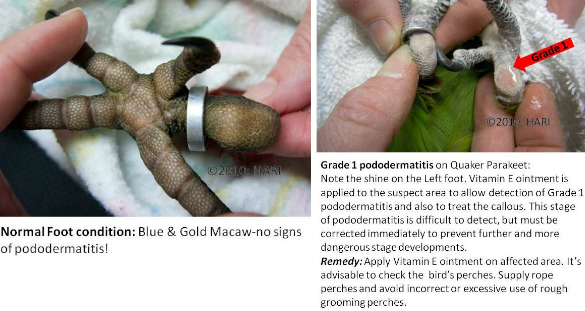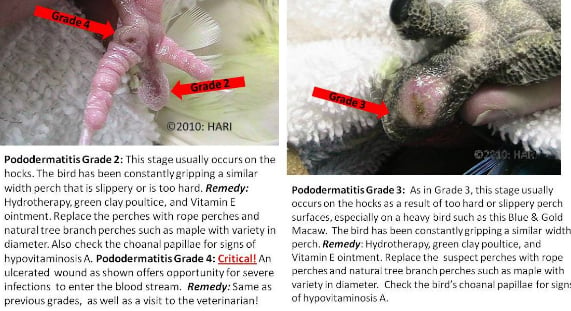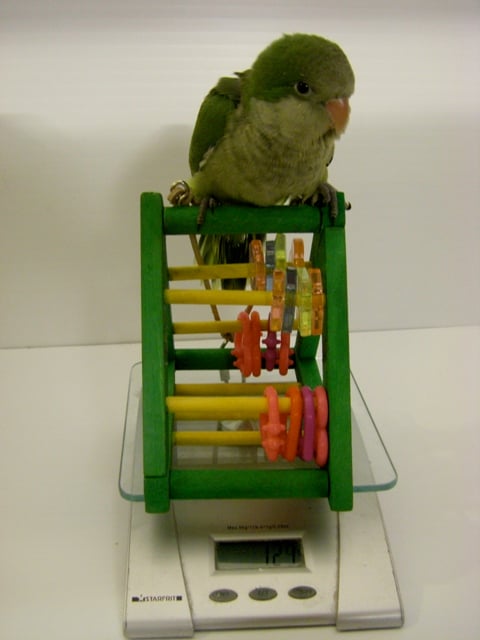Your cart is currently empty!

HARI Official Brand Site

Grooming and Health Assessment
What if you are unsure about something you’ve noticed on your bird? Do you call the veterinarian? You do if it’s critical! These are questions that are easier to address with an understanding of what is normal and what is abnormal. While the best way to assess the health of a bird is typically through regular avian veterinarian checkups, documented observation and monitoring as well as routine grooming offer the avian caretaker an excellent opportunity to assess the health of the companion bird be it a pet or a breeder bird.
So, let’s take a look at a pododermatitis!
Evaluating a bird’s feet is critical and is one of the most often missed ailments that affect pet birds and especially breeding birds with mere casual observation. Perhaps it’s due to the fact that the bird is standing on his feet all of the time!
Pododermatitis or “Bumblefoot” can result in many health issues and the severity is rated by grades. The causes of the various grades of pododermatitis are often correctable by the avian caretaker. Birds challenged with obesity, and lack of perch rotation are most certainly prone to bumblefoot condition. Other causes include diets low in Vitamin A & E, excessive use of grooming perches, lack of exercise, and exposure to cigarette smoke.
So, while the bird is securely wrapped in proper towel restraint and ready for his routine grooming, be sure to check the condition of his feet for signs of pododermatitis or “bumble foot.” The following photos show signs of various grades of Pododermatitis as well as suggested remedies.

In some cases, it is advisable to consult your veterinarian. Do make a notation in your bird’s records. For further information on pododermatitis, please check with your avian veterinarian and check out Symptoms & Treatment of Bumblefoot in Parrots.


A record of weights of a bird gives indication of “normal.” A variance in a bird’s average or “normal” weight is a sure sign that a bird might need a diet change or new exercise routine or in the case of unwarranted weight loss, a closer look at the bird’s current health condition. Be sure to take this opportunity to evaluate your bird’s choanal papillae! Have your tools & suggested supplies from your HARI Approved First Aid Arsenal ready before beginning your own health assessment! And, don’t forget to make a record of his feet!

Explore our list of commonly asked questions from fellow parrot owners just like yourself